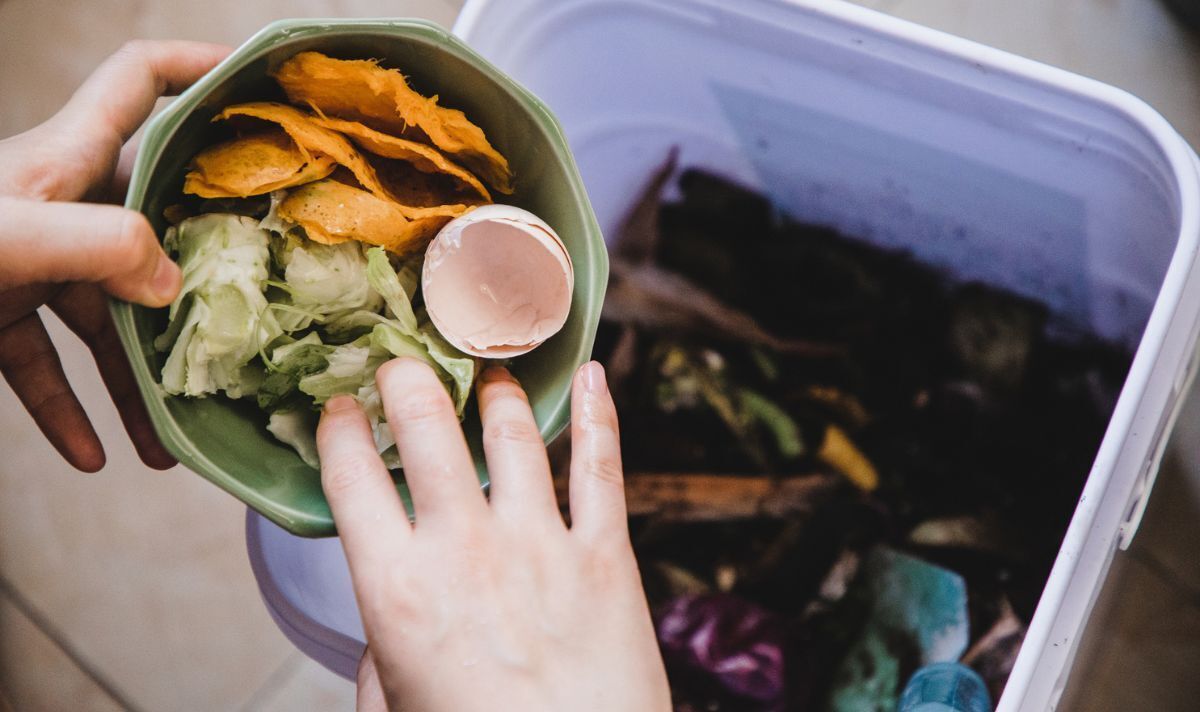
We use your sign-up to provide content in ways you’ve consented to and to improve our understanding of you. This may include adverts from us and 3rd parties based on our understanding. You can unsubscribe at any time. More info
Compost is one of the most nutrient-rich sources of food for gardens and can be used in numerous different ways. The earthy-smelling material can help improve soil structure, keep the pH level of soil balanced and suppress plant disease – and for no expense. Simon Mellin, CEO and Founder of Modern Milkman, noted that the UK alone generated “over 9.5 million tons of food waste in 2021”. Therefore the expert has shared some composting tips so the nation can turn its trash into treasure by removing garden and uncooked fruit and vegetable waste from regular disposal by composting.
He said: “Composting is not only a great way of disposing of food waste, it is also a completely natural procedure that requires very little effort. In terms of your home, composting will rapidly make your bin bags lighter and less smelly. This means no more nighttime squabbles over who gets to take out the bins, plus the satisfaction of knowing you’re doing your part to minimise your negative environmental impact. It’s a win-win situation!
“The compost created can also be used as a natural fertiliser. It can improve the structure and health of the soil and allows it to retain moisture and nutrients, helping the growth of lawns, trees, bushes, flowers, and houseplants. The method of home food waste disposal may appear daunting to a newbie, but it is actually quite simple.”
1. Research composting options
Simon recommended that gardeners make sure they look into all of the composting methods that are available to them, as apparently “factors such as your living space or even your location can dictate how you can compost effectively”.
He said: “It’s a myth that you need lots of space or a garden to start your journey, so for those who have limited space, we would recommend opting for an indoor kitchen compost bin or windowsill crates.”

For those opting for a compost bin, they should research the different kinds available and make sure they select one that suits their environment and the space available.
For example, if gardeners only have a small space, then their best option is a tube-shaped compost receptacle. For those who have more room, consider a wooden compost container.
2. There’s no need to spend a lot on a compost bin
In light of the cost-of-living crisis, most people are keeping a much tighter grip on the purse strings, which often means they avoid spending additional cash on new purchases or initiatives.
Simon suggested: “So, if you enjoy getting your hands dirty and want to save money, why not create your own DIY compost bin?”
Don’t miss…
‘Best’ solution to remove ‘tough’ grout stains without scrubbing [COMMENT]
Remove stubborn ‘green stains’ from your fence with kitchen staple [TIPS]
‘Most effective’ natural home remedy to ‘eliminate’ bed bugs [EXPERT]
3. Learn what can and cannot be composted
There is little education on what you can and cannot compost, so it can be difficult for gardeners to know the do’s and don’ts.
The expert recommended: “If you’re interested in starting your composting journey, take a look at your day to day items and see what can be thrown on the compost instead of in the bin – I bet you’d be surprised.
“The peelings from fruit and vegetables, for example, are great for composting. You can also often add cardboard from vegetable boxes as well as everyday items such as certain tea bags.”
There are also a lot of items that cannot be composted. When it comes to food items this includes meat, fish, dairy, oils and fats.

Non-food related items that cannot be composted include coal ash, plants treated with pesticides, diseased or infected plants and weeds.
4. Understand the compost ratio
Simon urged that it’s “crucial” to follow and understand “the correct mix” when composting, “or you’ll end up with a pile of mush”.
He said: “My top tip for anyone starting their composting journey, is to ensure you have a good mix of green and brown elements. The green waste consists of nitrogen-rich, fresh debris such as grass cuttings, fruit scraps, veggie peels, coffee grinds, and tea leaves.
“Brown materials are things that are desiccated and high in carbon, such as decaying leaves, hay, shredded leaves, and deceased vegetation. One of the most essential composting strategies is to understand these distinctions. Remember that green materials degrade quicker than brown, but provide the fibre and carbon required to form air spaces in the combination.”

To make composting easier, Simons suggested gardeners think of composting to be like stacking a lasagne, but with a one to one ratio of green and brown material.
He said: “When you first start, attempt to use 50 percent greens and 50 percent browns. These can be changed afterwards based on how your decomposition is progressing. Remember the greens and browns don’t have to be exact, just enter what you believe is ideal.”
However, if gardeners do not get a good mix of brown and green materials, their compost pile may not heat up, may take forever to break down, and could start to stink up the garden. These issues can usually be remedied easily by tweaking the ratio.
If gardeners find that their compost pile is not heating up, then they may need to add more green material to the compost and for those who find that their compost pile is starting to smell, they may need to add more brown material.
Source: Read Full Article
